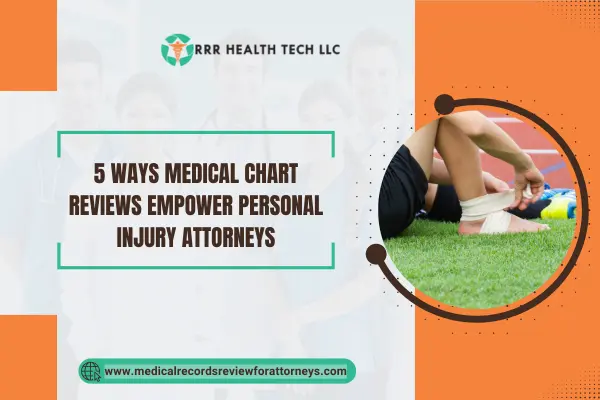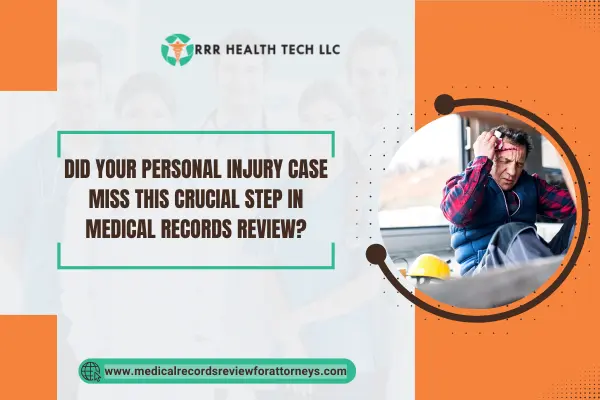
Introduction
A car accident is a dreadful incident to go through, not just for the victims but also the lawyers dealing with their representation. Perhaps one of the most important tasks of strengthening a case li is a properly organized set of medical files. The purpose of this article is to arm lawyers with an appropriate plan for managing their client’s medical records in an organized way after a vehicular accident so that they can represent their clients efficiently.
Understanding the Importance of Medical Records
Why Medical Records Matter Medial records provide information that serves as the primary foundation of every individual injury claim. Documents outlining the injuries sustained, the treatments received, and the changes inflicted upon the victim’s life are all part of this. It’s safe to say that the existence of accurate and complete medical records have a huge impact on both the liability decision and on the compensation of the case. The complete documentation can materially influence any case and its outcome.
Common Challenges
• Documentation Gaps: Any medical paperwork will undeniably have gaps that could lead to a claim being undermined.
• Slow Documentation Transfer: Medical records are relatively difficult to obtain, which in turn slows down legal activities.
• Jargon: Any medical document is bound to come with words that only people with medical training understand.
In Detail Instructions for Lawyers: Organizing Medical Documents after Car Accidents
Step 1: Meeting the Client for the First Time
While meeting the client for the first time, the lawyers must retrieve as much information as was needed in terms of the incident as well as the accident history of the client. Some of the important details to consider are:
• What injuries were suffered?
• What medical care was provided?
• Are there any prior conditions that might have an impact on the case?
Step 2: When the Client Has To Document the Scene
During the very first meeting with the client, it can be useful to encourage them to document the scene of the accident including:
• Pictures of the cars that were part of accident
• Statements of eyewitnesses
• Reports that were filed by police
Such documents framed along with the medical documents will portray a better picture of information.
Step 3: Collecting the Medical Records
How to Acquire Medical Records
For an efficient collection of medical records, the lawyers in question need to undertake the following procedures:
- Medical Care Provider Recognition: Mention the names of all people who treated the client.
- Make Appropriate Record Requests: Send requests through appropriate channels using HIPAA privacy-granting documents.
- Take them obtained Without Face To Face Engagement: Frequently check with the respective medical care providers on schedule.
Step 4: Acquiring Medical Documents
Contrary to popular belief, these documents need to be checked properly once obtained. Further they need to be checked for the following:
• Checks: See if the documents have properly matched with the client and his or her explanation of the accident.
• Diagnosis Comprehensiveness: Ensure treatment procedures and relevant diagnoses are included.
• Expert Opinions: Perhaps use a medical records review firm to get an expert opinion.
Step 5: Assessing the Effect of Injuries
It is important to note how injuries impact the client’s life. Attorneys ought to consider:
• Physical Limitations: What limitations to activities are experienced due to injuries?
• Psychological Effects: Are there any emotional scars due to the incident?
• Financial Effects: What are the medical expenses and earnings lost?
Step 6: Prepare a Proper Strategy for the Case
Having analyzed the medical history, attorneys can effectively structure the case. This will involve:
• Demonstrating Liability: Use medical documentation to show how the injuries were sustained and the impact caused.
• Cross Checking Damages: Determine the incurred damages which include economic and non-economic damages.
Step 7: Trial Preparation
In the unfortunate event that this goes on trial, attorneys must be ready to explain medical records in clear terms. This entails:
• Evidence Ordering: Arrange the medical care documentation and chronological order.
• Expert Witness: Arrange for medical specialists to be called to elaborate on the injuries and treatments offered.
Step 8: Case Settlement Discussions
In most incidences, these discussions are held with the other parties before the trial commences. Attorneys are expected to:
• Present Medical Evidence: Support the settlement figure put forth by using medical documentation.
• Align Settlement Deals with Client’s Goals: Ensure that any proposed settlements consider the client’s needs for the future.
Step 9: After the Settlement Has Been Achieved
Attorneys need to:
• Conduct A Final Review Of Medical Expenses: Ensure that all required medical costs are incorporated.
• Provide Advice On On-going Medical Concerns: Explain any further medical attention that may be required.
Step 10: Remedial Actions
Everything keeps on changing in the law industry. Attorneys should check on:
• The Legislation Governing Medical Documents: Focusing on HIPAA and state laws is crucial.
• Instructional Updates on Medial Documentation Policies: Participating in competency workshops will greatly assist.
Case Studies
Case Study 1: Managing Medical Records Difficulty
Overview: A client was rear-ended and developed whiplash. Struggling with the initial whiplash medical records was a persistent issue needing deep investigation.
Challenges: Various healthcare providers seem to have recorded different diagnoses in the medical records which conflicts with the injuries’ reality.
Solutions: The attorney collaborated with a medical records review company to analyze the records comprehensively. They identified discrepancies and worked with medical professionals to clarify the client’s condition. This expert analysis helped to present a unified narrative of the injury.
Case Study 2: The Shortcomings of Slow Medical Record Acquisition
Overview: This case involved a client who sustained multiple fractures during a car accident and had to undergo extensive medical treatment. Medical record delays almost killed the case.
Challenges: The attorney encountered significant gap delays in obtaining records from several healthcare practitioners, which stifled the ability to effectively strategize for a sturdy case.
Solutions: The attorney was more aggressive by interfacing directly with the medical facilities and employed a medical records retrieval service. She was able to receive all the requisite documentation without delay.
Conclusion
Proper handling of medical records pertaining to a car accident is an important aspect of legal representation. Following the guidelines in this manual will greatly enhance the advocate’s ability to effectively represent the clients so that the compensation award is equitable. Attorneys can further strengthen and enhance their practice by continually educating and collaborating with medical record review companies, resulting in improved outcomes for clients.


